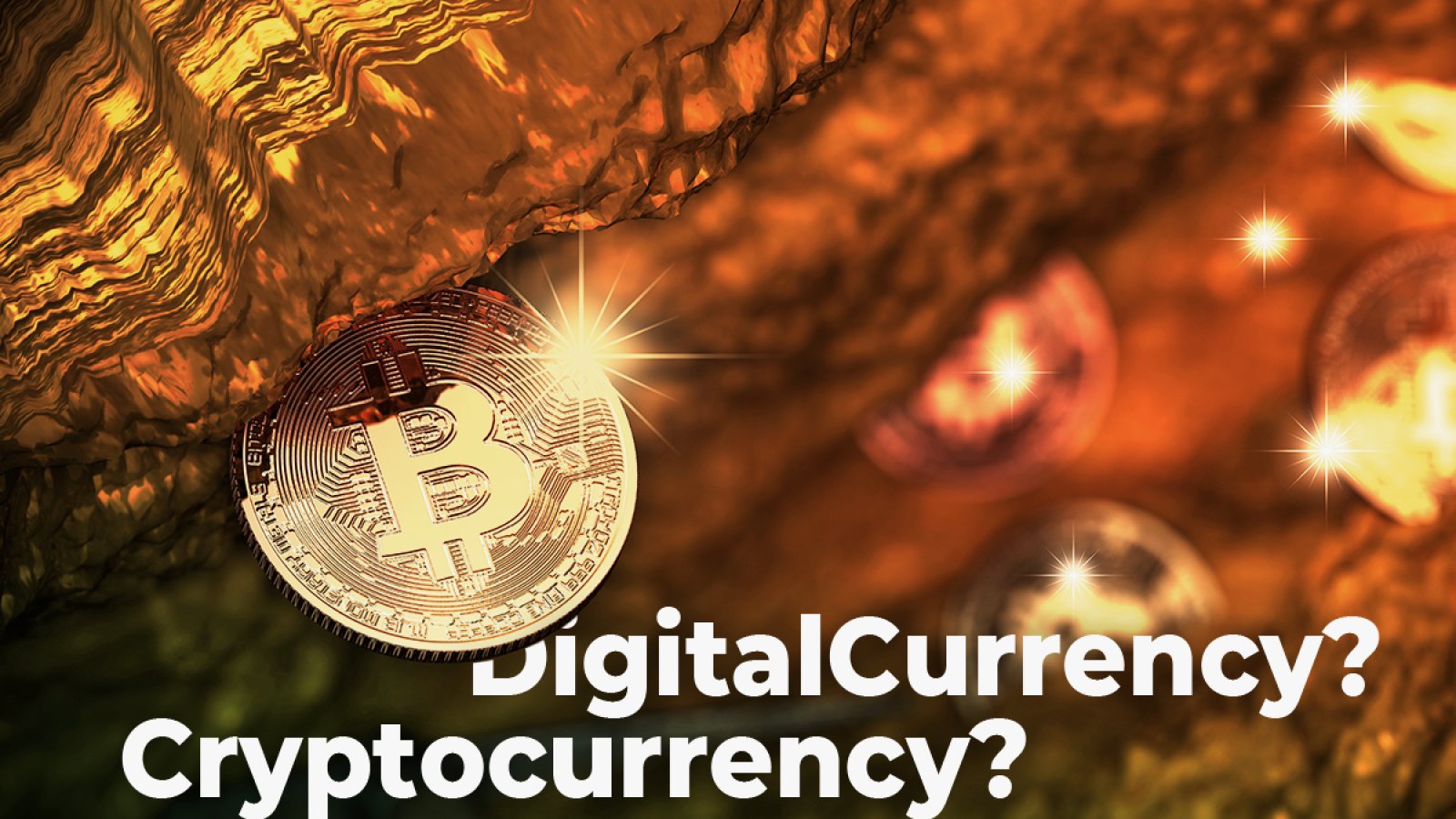One of the many benefits of the Internet is the development of new types of currencies. Unlike traditional paper bills, these new currencies have transformed the way value exchange is being accomplished. In today’s world, it is not uncommon to hear phrases like “digital currency” and “cryptocurrency.” These words emanate the same reaction from most people who think they either mean the same thing or are closely related. Is there a difference between digital currency and cryptocurrency? What is it? Let’s dig deeper.
Cryptocurrency has generated a lot of frenzies and has attracted lots of dedicated subscribers in recent times. In fact, a considerable amount of novices are joining the train on a daily basis with the hopes of eventually making so much money. Clarifying how they differ from digital currencies will help digital enthusiasts make more informed decisions. In this post, we are going to provide an answer to the basic question; what is the difference between cryptocurrency and digital currency?
What is digital currency?
Just like a standard fiat currency, a digital currency has no physical equivalence stored in the form of cash or gold. They are just made of arbitrary numbers and digits saved in people’s account. While it might not appear appropriate to just have random figures on the computer screen telling you how much you own, it might interest you to know that about 90 percent of all currencies exist in this form.
Just like traditional cash, digital currencies are accepted as legal tender and they can be used to purchase goods and services. It can be transferred between accounts and this is especially easy to complete considering the digitized nature. Even though these currencies are digital in nature, they can be exchanged for physical cash.
Transaction services like Internet banking, credit cards and PayPal make use of digital currency. Being digital, they are unrestricted by geographic boundaries and can be used for transaction anywhere in the world.
Cryptocurrency- a form of digital currency
In essence, cryptocurrencies are a subset of digital currencies. They emerged to address the issue of centralization, poor privacy policy and security issues associated with conventional digital currencies.
Cryptocurrencies make use of a decentralized ledger. This means that transactions made by cryptocurrency users aren’t supervised, regulated or audited by an authoritarian body. Since cryptocurrencies employ cryptography for communication, they offer a strong security system which proves difficult to breach.
Examples of common cryptocurrencies include Bitcoin (the world’s largest cryptocurrency), Ethereum, Litecoin, Dogecoin and so on. Some of these alternative coins are still in its infant stages, they are associated with market instability and have not been widely accepted as a legal tender.
What is the difference between cryptocurrency and digital currency?
These forms of currencies are inherently similar. However, their similarity devolves into distinct features when they are examined more critically. Here are some of the major differences between digital currency and cryptocurrency.
1. Decentralization vs. centralization
Just like the traditional banking system, a majority of digital currencies are regulated by regulatory bodies like the Federal Reserve or other designated government parastatals. This means that transactions are constantly monitored, and their value determined by these regulatory bodies.
On the other hand, cryptocurrencies are fully decentralized. This means that no institution is set aside to regulate them. The rules are set by its community. As a result, the viability of a cryptocurrency is highly dependent on the strength its community can garner.
2. Privacy
Privacy in this sense refers to the ability to conceal the information of the account owner.
With digital currencies, this is practically impossible. To open a digital account, you need to upload your photo and fill in your personal details, to make use of services like PayPal, you have to fill in your information like name and address. Hence, you can easily be tracked.
On the other hand, you don’t necessarily need to disclose any of your personal information when opening a wallet for cryptocurrency trading. In fact, coins like Dash are available to provide full anonymity, and this is one of the reasons why cryptocurrencies were widely used on the dark web.
3. Transparency
The framework of digital currencies only allows approved entities to get access to the transaction information. Information regarding transactions of which you’re not directly connected is withheld from you.
On the other hand, cryptocurrency transactions are made available to the public domain. Even though the people behind the transactions are unknown, this way, you can personally monitor how much money is in the system.
4. Legal framework
Most digital currencies are backed by a recognized central authority. Having legal support from government and financial institution establishes their general usage and acceptance.
On the other hand, cryptocurrencies aren’t backed by any form of a recognized body. As a consequence, they’re not yet fully recognized as a legal tender worldwide. However, the work on cryptocurrency regulation is going fast. Government agencies are looking for opportunities to incorporate crypto into an existing financial model.
5. Dominance
Due to their recognized backing, digital currencies are accepted all over the world. Carrying out transactions with digital currency isn’t restricted by geographic borders, race or even belief systems.
Cryptocurrencies, on the other hand, are loners. They are only accepted by a small group of institutions and compared to other centralized digital coins, their popularity doesn’t measure. Although analysts pose that this will soon change and government regulations will be more favorable towards cryptocurrency.
6. Transaction interference
Since transactions are monitored by central authorities when using digital currency, they can easily flag transactions suspected to be suspicious or even freeze an account temporarily on the request of the owner. This makes transaction reversible.
On the other hand, once a transaction is completed with cryptocurrency, it is automatically added to the Blockchain and is forever irreversible.
7. Value fluctuation
For digital currencies, its value is determined and regulated by financial institutions. This makes the currency relatively stable.
Cryptocurrencies, on the other hand, are unregulated. This makes them highly volatile and susceptible to slight behavioral changes in its community. As an example, take a look at the fall of Bitcoin’s price in 2018 from a mark of $20,000 to $3,200. 2019 was no exception, this July, Bitcoin has lost almost 30% of the price, rolling back from the mark of $13,000 to $9,300.
The merging point between digital currency and cryptocurrency
Theoretically, having a currency system with the stability associated with digital currencies and the privacy and security offered by cryptocurrency sounds very enticing.
Though digital currency and cryptocurrency were created for exchanging value, they operate in a fundamentally different way. This means that their intersection might be impossible or at best, extremely difficult. This difficulty arises because; how can you have a stable system that isn’t regulated?
Some features might, perhaps, be integrated to engender the best digital currency ever known to man. According to experts, the core features should be;
-
Security
-
Decentralization
-
Government’s approval
Conclusion
It quite amazing how we’ve made the transition from “cash” to electronic money in less than half a century. With digital currencies dominating our current world, we now think in terms of numbers instead of coins or paper bills. It is expected that financial analysts leverage the benefits of traditional digital currencies and cryptocurrencies to further improve usability.








